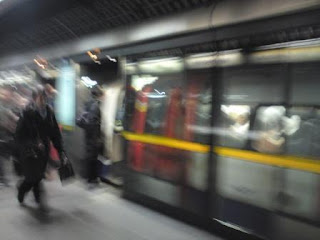
While researching for the last assignment of the year, I was looking through D.School Bootcamp Bootleg handbook that was recommended to us at the start of the year. Forgetting how much useful information was in it, one of the ideas discussed is one I would like to apply to future projects.
A Beginner's mindset. As we grow up we look at things in a more complex way. Moving through life we head through a series of experiences that can determine our character and in turn affect how we interpret things. Picking up stereotypes and biased opinions due to the surroundings we grow up in, by the time we reach maturity we have so many opinions and ideas swirling our heads it can be hard to distinguish what is actually true or false. These thoughts should not be disregarded but it is important that when designing you understand that these are your opinions and are not necessarily what others think too.
According to the handbook when assuming a beginner's mindset there are 5 rules to adhere to...
1. Don't Judge. Using techniques such as observations will allow you watch users but it is important not to influence or interfere with how they behave and react.
2. Question everything. Why? Exactly. Never before would I have classed my younger cousin, who at age two had a fascination with the word why?, to have the creative mind. Why, indeed. It is our job as designers to question everything. Even things that make sense to us might not make sense to our clients. It is important that we gain a true representation of what a client wants and by not asking obvious questions we may miss something very significant and assume.
3. Be truly curious. As a child I can remember touching and pulling at everything, so what happened to that curious child? We learn not to touch in case we break. This restraint pulls our prying hands back but what we should do is try and shake these ties off and start to wonder more.
4. Find patterns. Reoccurring themes can sometimes occur between clients and it is useful to think about how these ideas can intercross with one another - think how you might apply these to different projects.
5. Listen. Relax and just take in what the client is saying. Absorb everything and don’t get distracted. Watch how they talk about things and how they say things, do they talk passionately? How do they express what they are trying to say? All these factors will differ depending on each client and it is important to understand them fully and interpret what they are trying to say.
Next time you have a client, shake off all those burdens and let that inner child of yours escape!
With thanks:
D.School Bootcamp Bootleg handbook
http://www.wealthonauto.com/images/amazing_surprising_child_looking_searching_binoculars.jpg
























